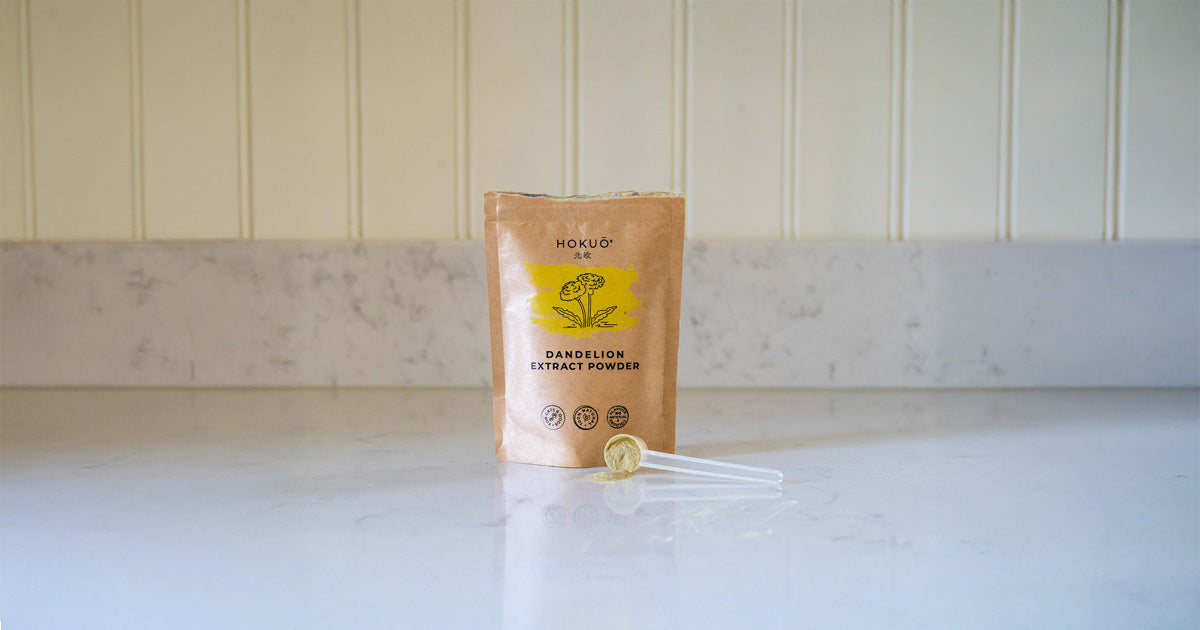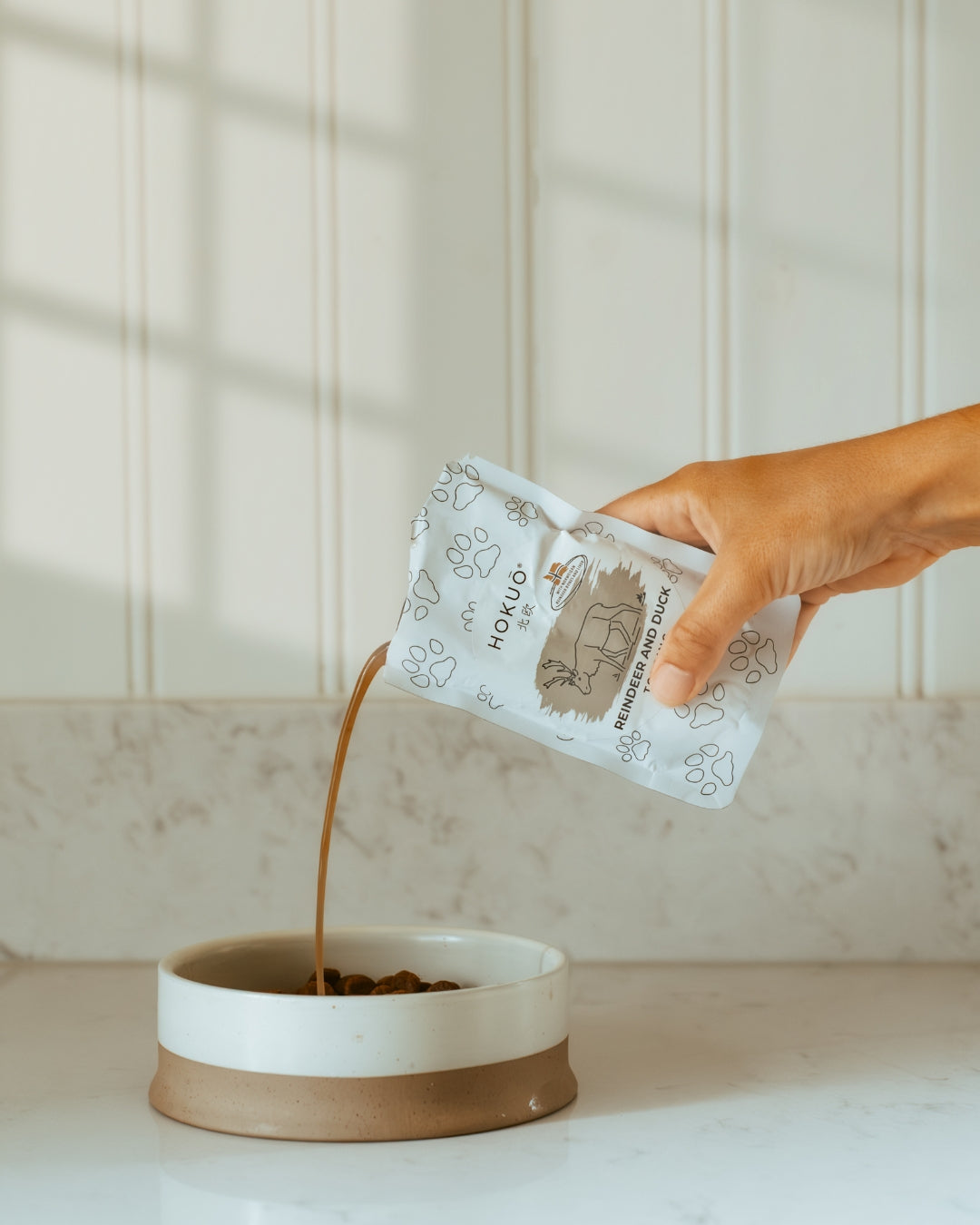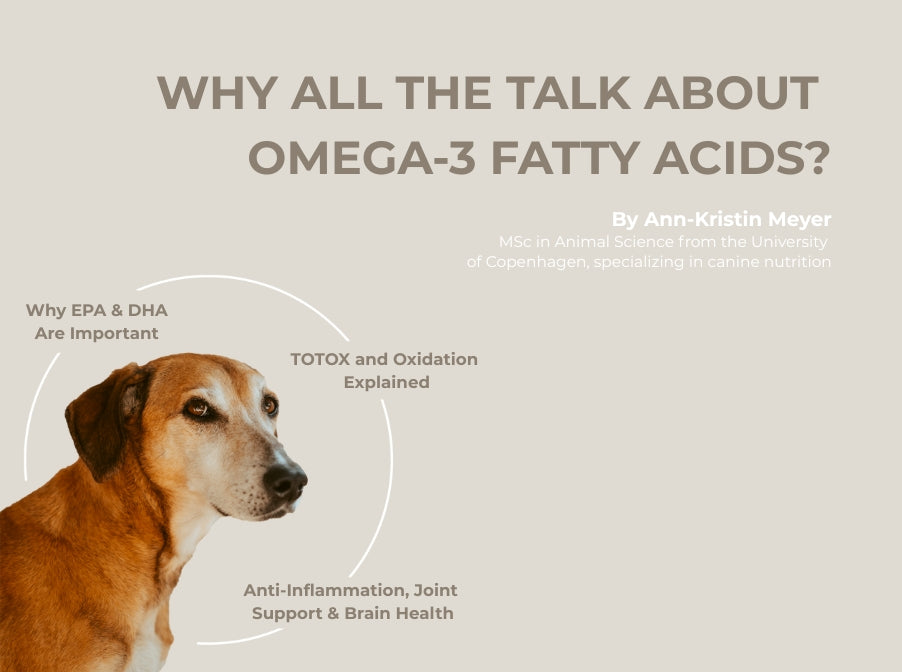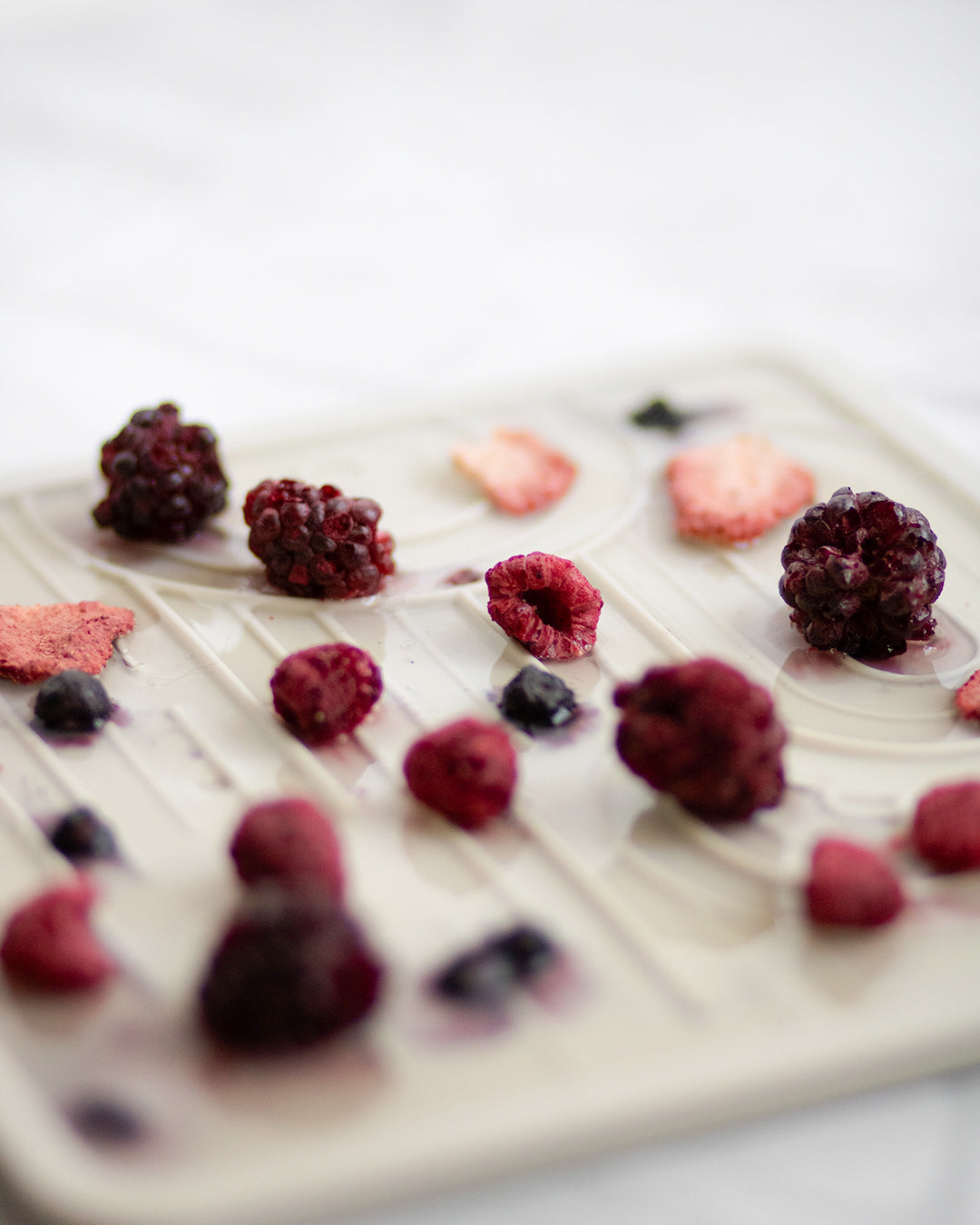Varför pratar alla om omega-3-fettsyror?
Om du har hund har du förmodligen varit med i minst en diskussion om hundfoder. Och ganska ofta landar samtalet på ett särskilt näringsämne: omega-3-fettsyror. Men varför är det så mycket fokus på omega-3 i hundmat? Vad gör omega-3-fettsyror så speciella jämfört med andra näringsämnen? Och vad ska du vara uppmärksam på när du väljer omega-3-tillskott till din hund? Det är precis det du får veta här nedan.
Innehållsförteckning
Vad är omega-3-fettsyror? Vilka omega-3-fettsyror finns det? De viktiga fysiologiska funktionerna hos EPA och DHA Det slutar inte där Det här behöver du veta när du väljer och förvarar omega-3-tillskott till din hund Nästa gång du är i hundparken …
Vad är omega-3-fettsyror?
Omega-3-fettsyror är fleromättade fetter som är avgörande för en rad fysiologiska processer. De tillhör gruppen långkedjiga fettsyror, vilket gör dem särskilt reaktiva och biologiskt aktiva. Det är viktigt att ha i åtanke när du väljer omega-3-tillskott – och när du ska veta hur de ska förvaras.
Eftersom hundar inte kan producera tillräckliga mängder omega-3-fettsyror själva måste de tillföras via fodret. Det gör omega-3 till essentiella näringsämnen för hundar.
Se produkt
Vilka omega-3-fettsyror finns det?
De omega-3-fettsyror som oftast diskuteras inom hundnutrition är alfalinolensyra (ALA), eikosapentaensyra (EPA) och dokosahexaensyra (DHA). Även om alla tre är omega-3 så är de inte likvärdiga när det kommer till att utfodra din hund. ALA finns i många växtbaserade oljor som linfröolja, hampaolja och chiaolja, och kan i kroppen omvandlas till EPA och DHA. Hundar är dock inte särskilt effektiva på att omvandla ALA – bara cirka 5–10 % blir EPA, och mindre än 1 % blir DHA.
Det innebär att vegetabiliska oljor – med ett undantag – inte kan ersätta ingredienser som är rika på EPA och DHA. Undantaget är algolja, som är den enda växtbaserade oljan som är rik på både EPA och DHA. Alla andra betydande källor till EPA och DHA kommer från marina källor som fisk, musslor, krill och alger.
Varför EPA och DHA är så viktiga
Du kanske tänker: ”Varför kan jag inte bara använda en bra växtolja som är rik på ALA?” Det är ofta både enklare och billigare. Svaret ligger i det breda spektrum av fysiologiska effekter som EPA och DHA ger – men som ALA inte ger.
Även om ALA på papperet räknas som en essentiell fettsyra är dess främsta funktion att fungera som föregångare till EPA och DHA. Och eftersom hundar knappt kan göra den omvandlingen är ALA inte fysiologiskt tillräcklig. Den kan inte täcka hundens verkliga omega-3-behov, särskilt inte vid inflammation, dräktighet och digivning, hjärnans utveckling hos valpar eller problem med hud och päls.
Här kommer haket: om du siktar på en låg omega-6 till omega-3-kvot (med god anledning, vilket vi återkommer till senare) kan du inte bara förlita dig på siffrorna som anges av foderproducenten. En kvot på 4:1 eller 3:1 kan se jättebra ut – men om omega-3-delen främst kommer från ALA får fodret inte den effekt du är ute efter.
Det positiva? Du behöver inte oroa dig för om din hund får tillräckligt med ALA. Du kan fokusera helt på EPA och DHA.
Wild-caught Baltic Sprat Graphic © Hokuō®
New Zealand Green-Lipped Mussel Graphic © Hokuō®
De viktiga fysiologiska funktionerna hos EPA och DHA
Anti-inflammatoriska egenskaper
En nyckelorsak är EPAs anti-inflammatoriska effekt. Det är här förhållandet mellan omega-6 och omega-3 blir mycket relevant. Arakidonsyra (AA), en omega-6-fettsyra, och EPA bearbetas båda i kroppen via samma enzymvägar: cyklooxygenas (COX) och lipoxygenas (LOX). Dessa enzymer omvandlar fettsyrorna till eikosanoider, hormonliknande budbärare som hjälper till att reglera inflammation.
När AA bryts ned bildas främst eikosanoider som främjar inflammation, smärta, feber och rekrytering av vita blodkroppar – något som är nödvändigt vid en akut infektion. Men för mycket AA-aktivitet kan leda till kronisk inflammation.
EPA, däremot, omvandlas till eikosanoider som motverkar inflammation. Eftersom EPA och AA konkurrerar om samma enzymer hjälper en högre EPA-koncentration i blodet till att dämpa hundens inflammatoriska svar.
EPA och DHA är också föregångare till specifika signalmolekyler som aktivt löser upp inflammation och stödjer vävnadsläkning.
Roll vid ledbesvär och artros
Denna anti-inflammatoriska verkan är också anledningen till att omega-3 spelar en så viktig roll vid hantering av artros. Artros är en låggradig, kronisk inflammation i lederna. De anti-inflammatoriska egenskaperna hos EPA och DHA kan minska ledsvullnad, smärta och stelhet.
Studier har visat att hundar med artros som fått tillskott av marina omega-3-fettsyror gick bättre och längre, visade mindre smärtbeteende och behövde färre NSAID-läkemedel. Det finns också potential för EPA och DHA att bromsa utvecklingen av artros genom att minska nedbrytningen av ledbrosk.
Hjärnans utveckling och kognitiv funktion
Marina omega-3 är inte bara bra mot inflammation – de är också avgörande för hjärnhälsan. Särskilt DHA är viktigt för nervsystemets utveckling hos valpar och för att bevara kognitiv funktion hos äldre hundar. Det är inte så konstigt, med tanke på att DHA är en viktig strukturell komponent och den mest förekommande fettsyran i hundens hjärna.
Flera studier tyder på att valpar som fick DHA-tillskott efter avvänjning lärde sig snabbare, visade bättre kognition och hade bättre minne än de som inte fick DHA. Detsamma gäller valpar vars mödrar fick DHA under dräktigheten – de presterade avsevärt bättre i beteende- och kognitionstester.
Det slutar inte där
Och nej, fördelarna slutar inte där. EPA och DHA stöttar också hudbarriären och bidrar till bättre hud- och pälskvalitet. Även hjärt-kärlsystemet gynnas av marina omega-3, och DHA har visat sig förbättra inte bara kognition utan också synutvecklingen hos valpar.
En nyare observationsstudie tyder till och med på att marina omega-3 i valpfoder kan minska risken för epilepsi senare i livet.
Det här behöver du veta när du väljer och förvarar omega-3-tillskott till din hund
Välj fiskoljor eller andra omega-3-tillskott från hållbara källor som är testade och renade från föroreningar som tungmetaller och PCB:er.
Omega-3-fettsyror är mycket känsliga för oxidation (kom ihåg: de är mycket reaktiva och biologiskt aktiva). Oxiderade fetter är inte bara verkningslösa – de kan faktiskt skada hundens vävnader genom att bilda fria radikaler. Totox-värdet (total oxidation) är ett mått på hur oxiderad en olja är. Ju lägre Totox-värde, desto mindre oxiderad är oljan. Sikta på ett Totox-värde under 5. Tyvärr anges inte alltid detta värde av tillverkaren.
Förvara omega-3-tillskott på ett sätt som skyddar dem från ljus, värme och syre. Förvara dem i kylskåp och använd dem inom några veckor.
Du kan också täcka en del av din hunds omega-3-behov genom att ge fet fisk regelbundet i fodret. Beroende på hur mycket fisk som ingår kan ytterligare tillskott vara onödigt. Många kompletta hundfoder innehåller också marina omega-3 – men precis som tillskott är de känsliga för oxidation. När fodret väl hamnar i hundens matskål kan omega-3-fettsyrorna därför ha tappat mycket av sin effekt.
Det beror på många faktorer: kvaliteten på omega-3-källan, hur fodret är förpackat, hur länge det har lagrats hos tillverkaren, hos återförsäljaren och hos dig – och till och med storleken på fodersäcken, som påverkar hur länge fodret utsätts för syre.
Se produkt
Se produkt
Nästa gång du är i hundparken …
Nästa gång du är i hundparken och samtalet glider in på hundfoder och omega-3 är chansen stor att du vet mer än de flesta – och kanske till och med kan bjuda på ett tips eller två.
Källor:
Antonelli, C. et al. (2023). Effects of docosahexaenoic acid dietary supplementation on cognitive learning and memory in healthy puppies. Animals, 13(20), 3261.
Bauer, J. E. (2011). Enhancing canine cognition with omega-3 fatty acids. Nestlé Purina Nutrition Forum.
Bauer, J. E. (2006). Therapeutic use of fish oils in companion animals. Journal of the American Veterinary Medical Association, 229(11), 1761–1764.
Bauer, J. E. et al. (2018). Evaluation of enrichment of diets with omega-3 fatty acids and effects on plasma fatty acid profiles in dogs and cats. Journal of the American Veterinary Medical Association, 252(12), 1470–1478.
Calder, P. C. (2017). Omega-3 fatty acids and inflammatory processes: from molecules to man. Biochemical Society Transactions, 45(5), 1105–1115.
Carlisle C. et al. (2024). The Effects of Omega-3 Supplementation on the Omega-3 Index and Quality of Life and Pain Scores in Dogs. Animals, 14(21):3108.
Freeman, L. M. et al. (2010). The role of nutritional supplements in cardiac disease. Journal of Veterinary Cardiology, 12(3), 149–155.
Fritsche, K. L. et al. (2010). Omega-3 polyunsaturated fatty acids and immune regulation. British Journal of Nutrition, 104(Suppl 2), S1–S9.
Heinemann, K. M. et al. (2005). Docosahexaenoic acid supplementation during pregnancy and lactation affects visual, cognitive, and behavioral development in dogs. Journal of Nutrition, 135(8), 1960S–1964S.
Hemida M. et al. (2023). Assessing the association between supplemented puppyhood dietary fat sources and owner-reported epilepsy in adulthood, among Finnish companion dogs. Frontiers in Veterinary Science, 10:1227437.
Lenox, C. E. & Bauer, J. E. (2013). Potential adverse effects of omega-3 fatty acids in dogs and cats. Journal of Veterinary Internal Medicine, 27(2), 217–226.
Logas, D. & Kunkle, G. A. (1994). Clinical response of canine pruritus to dietary supplementation with omega-3 and omega-6 fatty acids. Veterinary Dermatology, 5(3), 99–104.
Packer, R. M. A. et al. (2023). Fish-based fat sources in puppyhood are associated with reduced risk of idiopathic epilepsy in adult dogs. Frontiers in Veterinary Science, 10, 1202192.
Roush, J. K. et al. (2010). Evaluation of the effects of dietary supplementation with fish oil omega-3 fatty acids on weight bearing in dogs with osteoarthritis. JAVMA, 236(1), 67–73.
Shahidi, F. & Zhong, Y. (2010). Lipid oxidation and improving the oxidative stability. Chemical Society Reviews, 39(11), 4067–4079.
Zicker, S. C. et al. (2012). Cognitive and behavioral effects of dietary supplementation with fish oil in senior dogs. The Veterinary Journal, 192(3), 426–431.
Zicker, S. C. et al. (2012). Evaluation of cognitive function in puppies fed dietary docosahexaenoic acid. Journal of the American Veterinary Medical Association, 240(8), 935–941.
Författare: Ann-Kristin Meyer
MSc i Animal Science vid Köpenhamns universitet, med inriktning mot hundnutrition, ägare av HundefoderNørden
3 enkla sommarsrecept till slickmattor för katter och hundar
Läs mer
Benbuljong till hundar och katter: flytande eller torkad?
Läs mer
Hur tillverkas frystorkade godbitar för katter och hundar?
Läs mer








